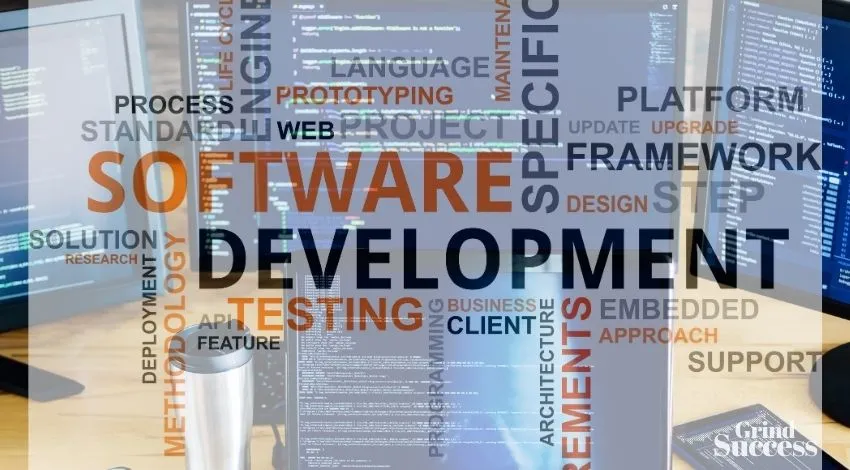What Is Trucking API & How Is It Used in Logistics Software Development
Logistics and commerce organizations struggle with multi-stop, multi-mode cargo transit. Time-consuming and error-prone organization.
Software control systems may help in route development and optimization.

Trucking API improves software.
This article discusses API trucking benefits and applications.
Why Do Trucking Companies Require Software Tools?
Cargo transportation is one of the most complicated logistical procedures. Its manual arrangement is highly hard since various elements must be considered, such as:
There may also be critical modifications during the day. Change delivery priority or add a stop. Remember that traffic has risen in recent years, therefore rebuilding the route may be necessary to deliver the products on time.
Routing software helps. They usually have dispatcher and driver apps for easy communication. The driver sees all dispatcher-added points instantly.
The program determines the best route to deliver stuff on time and save gasoline. Drivers save time by not having to lay a route.
Here are some logistics company routing software statistics:
The Logistics Industry and the Benefits of Digitization
It’s important to highlight the primary gains made by logistic firms thanks to this kind of software:
Here are some Logistics Industry and the Benefits of Digitization.
What Is a Trucking API?
API software lets programs exchange data and communicate. The API gets a request from one application, contacts the server for all the data, and provides it to the supplicant. APIs connect supply-chain programs and servers.
Programming languages do not affect interaction quality or speed. API trucking, a cloud-based Internet solution, may be linked to a third-party TMS during development or beyond.
Logistics service providers utilize the trucking API to construct truck routing software that addresses individual needs by matching vehicle characteristics with route constraints and traffic circumstances, enabling real-time route design and re-routing.
API trucking integrates the company’s applications and lets you control the supply chain.
Today, CRMs or Transporting Managing Systems employ API trucking for its accuracy, speed, and efficiency (TMSs). Logistics software development uses transportation APIs for:
In transport management, trucking APIs have replaced EDI interfaces. Companies are adding APIs to their TMS to increase their capabilities.
Companies benefit from seamless supply chain operation, automated route planning, data interchange with workers, accelerated procedures, simplified data access, and enhanced logistics process interaction.
APIs Simplify Trucking and Cargo Transportation?
Consider API trucking’s commercial advantages.
It simplifies API integration for all activities.
Thus, adopting trucking APIs has several advantages and considerably boosts corporate profitability. However, even such beneficial technology has drawbacks.
Disadvantages of trucking APIs
We are a bespoke API development and API integration company that specializes in designing and integrating third-party APIs with all frameworks.
When creating trucking APIs, keep in mind that they contain several unique characteristics that must be considered:
As you can see, a skilled software service provider can overcome the drawbacks of trucking APIs, and the rewards are amazing. To demonstrate API use, consider ready-made solutions.
Implementing an API: What to Consider?
You choose to implement the trucking API. Let’s examine how to start and implement.
Step 1: Choose a concept
Decide why you need API trucking. Route planning, delivery tracking, data transfer acceleration, and other transportation activities may be optimized. To fulfill your aims, an API will be established or built.
Step 2: Find a technical partner
A professional software service provider will help implement a transportation API. Many firms can assist with this nowadays. Thus, your technical partner should have expertise in designing such solutions.
Even if you don’t have a concept, a skilled vendor can assist you to comprehend your needs. Simply stating it will allow you and technical professionals to build a project strategy and technical needs.
Here, offshore software suppliers are the best. They can provide an affordable, skilled workforce with industry skills.
Step 3: Consult a technologist
After choosing a technical partner, discuss API trucking objectives with a software provider. He will explain and propose a project roadmap. It clarifies development phases, dates, and outcomes.
Step 4: Implementing trucking API
Implementing the logistics API is the last step. If you want a software solution that optimizes all processes and meets all your requirements, we suggest a bespoke solution with an API on request.
Thus, all your aims will be met. You may also improve the software on demand.
How is API-integrated software created?
A specific algorithm is used to create software with an integrated trucking API. Consider the whole procedure in detail:
Trucking API software development companies in India may appear hard and time-consuming. An expert software supplier can help you choose the finest company optimization solution quickly and easily.
Improve Your Transportation and Logistics with Software Services
Logistics APIs are difficult, thus API trucking needs a technical partner with strong logistics and software solution knowledge. Like CMARIX. For over 10 years, we have executed over 170 software services projects. Logistics is our specialty.
We help companies streamline supply chains, save costs, boost efficiency, and boost profitability.
Consider building new software or integrating transportation APIs into your current software to boost earnings, and minimize expenses, and risk. CMARIX can assist with both.
